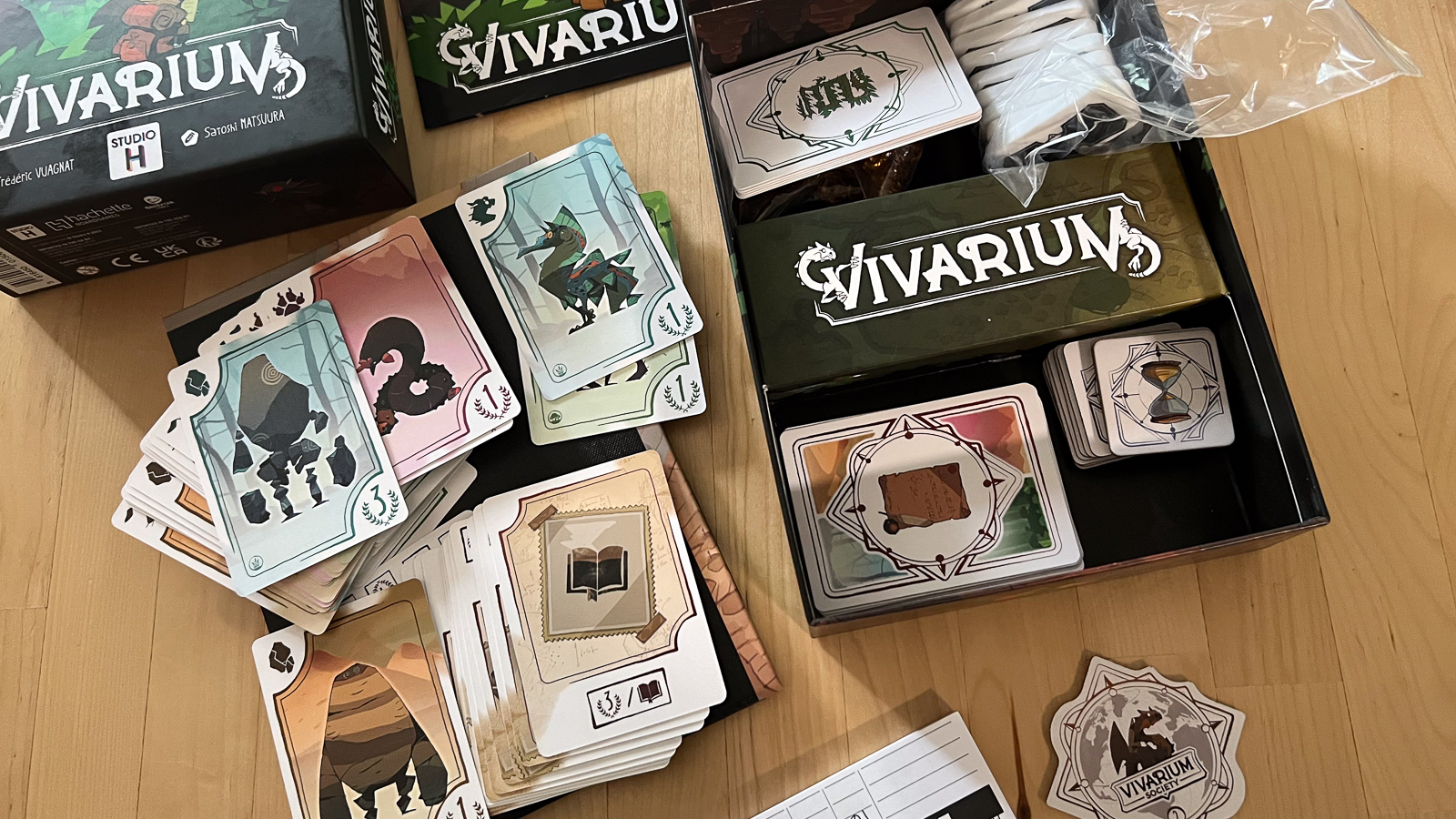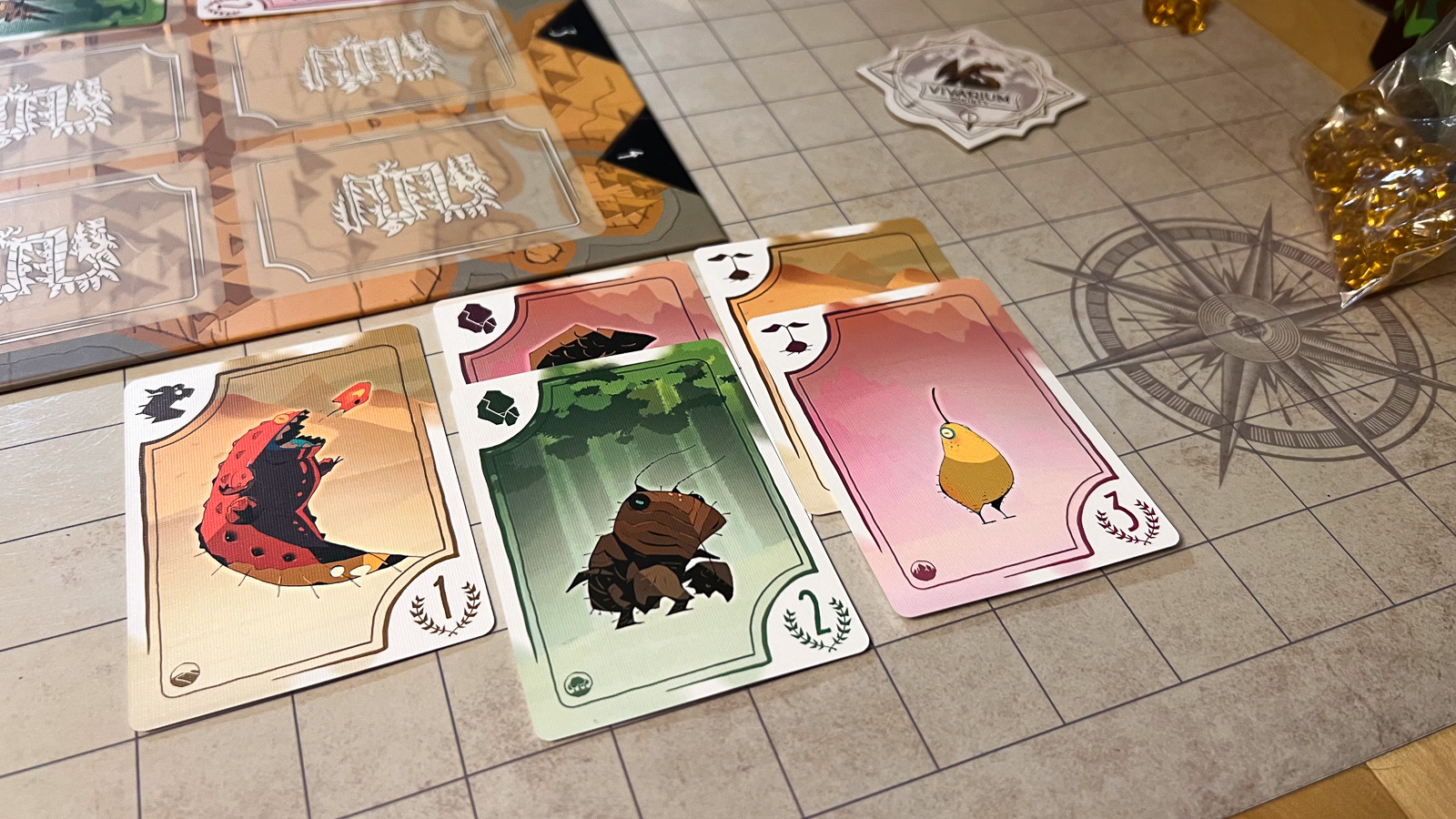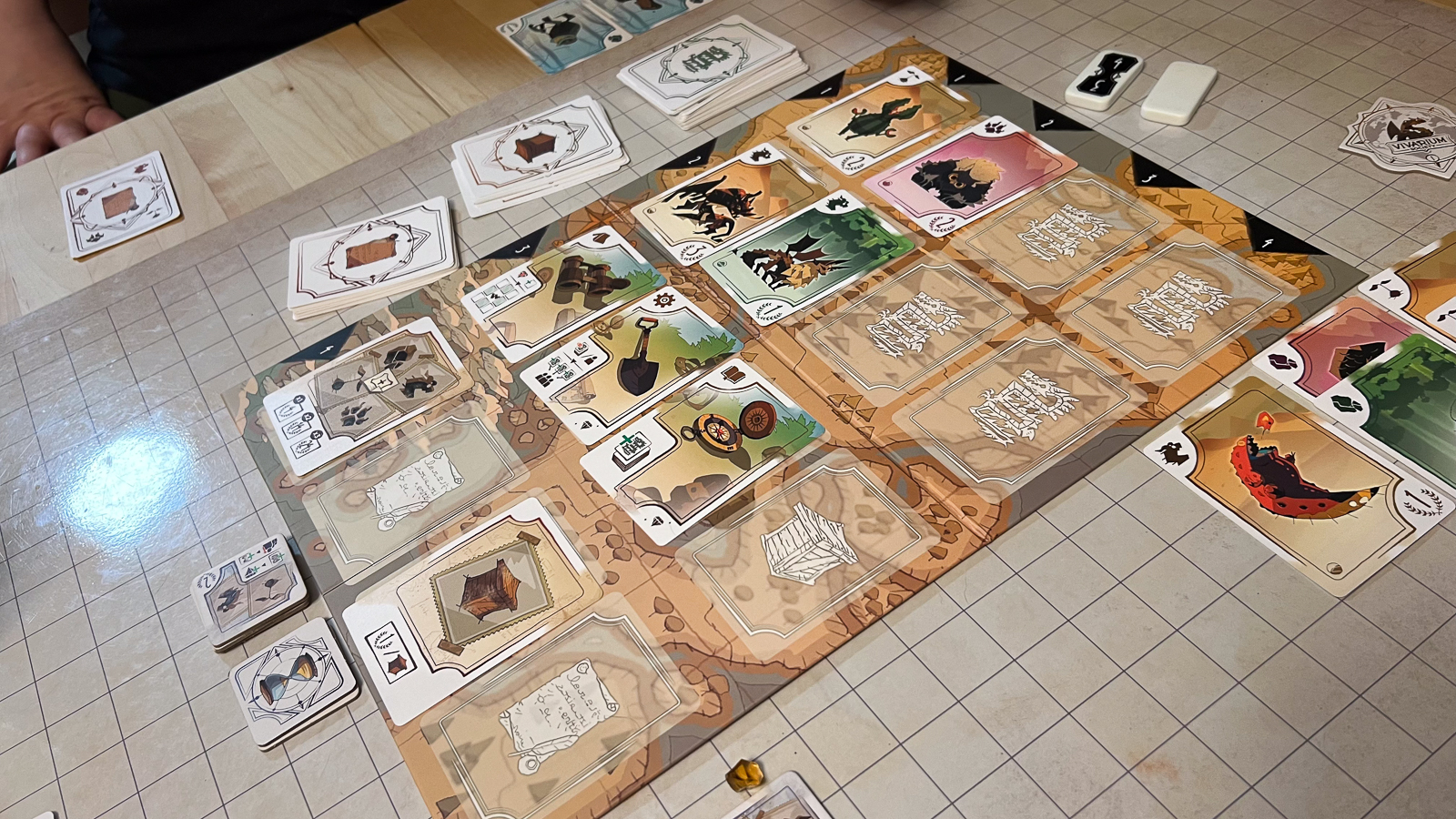
I find that easy to learn, filler games are really important on tabletops these days. Having just come back from a wargaming focused convention, I was looking forward to playing a game that could be easy to learn and master. Vivarium, an offering from Studio H, designed by Frédéric Vuagnat, provides that, along with cute artwork by Satoshi Matsuura.
In Vivarium, players take the role of scientists, who have discovered a cavern in Siberia, circa 1898. This cavern contains unknown flora and fauna, so it’s up to the players to document, along with collecting equipment and contracts, all of which add to a points system. The game is driven by set collection, contracts, and drafting mechanics.

The print quality of the game is excellent
Firstly, the packaging is solid, study cardboard, feels like it can easily take a few bumps and bruises. The box includes bags for loose pieces, gems, cards, dominos, a board, punch outs, and a handy score tracking pad. However, you don’t get pencils, which is a bit of a bummer. Secondly, the art of this game is top notch. Every creature is an intriguing combination of flora, fauna, and minerals, so it’s really pleasing to just go through the cards to look at the art, which is presented in a cute and unique styling, where creatures tend to be mixtures of materials, this helps push the idea the player is really discovering new species.

The artwork is cute and unique combinations of flora and fauna
Game setup is really easy. The instructions are sufficiently written that it only took some vocal clarifications at my table; normally we all like to read the rules. If you are a big rules reader, you’re not dealing with a lot.
Each game of Vivarium breaks down into 7 rounds, in which players are given 2 turns apiece to choose cards on the board which correspond to the dominos they are using, which helps drive the drafting mechanic. At the start of the round, a player will swap one of their 2 dominos with a 3rd domino usually set up at the top of the board, then they use any combination of the numbers on the dominos to choose a spot on the board to collect a card.
Players can collect specimens, equipment, and contracts. The contracts, which players start with, also help dictate strategy. These cards are kept hidden, so planning is a fun part of the game. All cards help a player acquire or lose Victory Points, and whoever has the most points is the winner. Gems, which can be collected as an alternative to cards, can be used for Victory Points or as a way to manipulate dominos by shifting a number up or down.Lastly, there are Priorities for each round, which also help direct player strategy. Think of them as open goals for anyone on the table to collect. They provide Victory Points and additional cards, so naturally, there are reasons to go for them.

Games can tend to be fast, which is great for a filler game.
When it came to playing the game, we found that while these mechanics were easy to grasp, we didn’t really pay attention to each other, choosing instead to focus on the mission in front of us. I think the game wants you to strategically choose cards that would put you at an advantage against other players, but in practice, it was just easier to build combinations of contracts and creatures in an attempt to get the most points, as there are some combinations of contracts that can help dramatically increase victory points. Even gems fell to the wayside as an afterthought, as they are meant to increase or decrease domino count, or be used for victory points. This lack of interaction between the players knocks this game down a peg. Outside of just trying to make the right collection of cards for you, there’s not a whole lot of incentive for trying to manipulate the other players.
If Studio H makes an expansion, I hope something is done to remedy this. Give me a reason to manipulate my opponents, to interact with them…after all, aren’t most board games supposed to be fun group activities?
What this game does really well is provide an experience that’s easy to understand and setup, in a tight, compact box. Games barely took a half hour with two people, and with four people, I imagine it’s even faster. It’s beautiful, but if you’re looking for strategic depth, look elsewhere.
Vivarium
Good
With beautiful artwork and easy to understand mechanics and rules, Vivarium can be a quick filler game for your table, but lacks the strategic depth to stick around for more than a few playthroughs.
Pros
- Easy to setup and understand
- Gorgeous artwork
- Games are quick
Cons
- Strategy is lacking
- Replayability will dip after a few games
